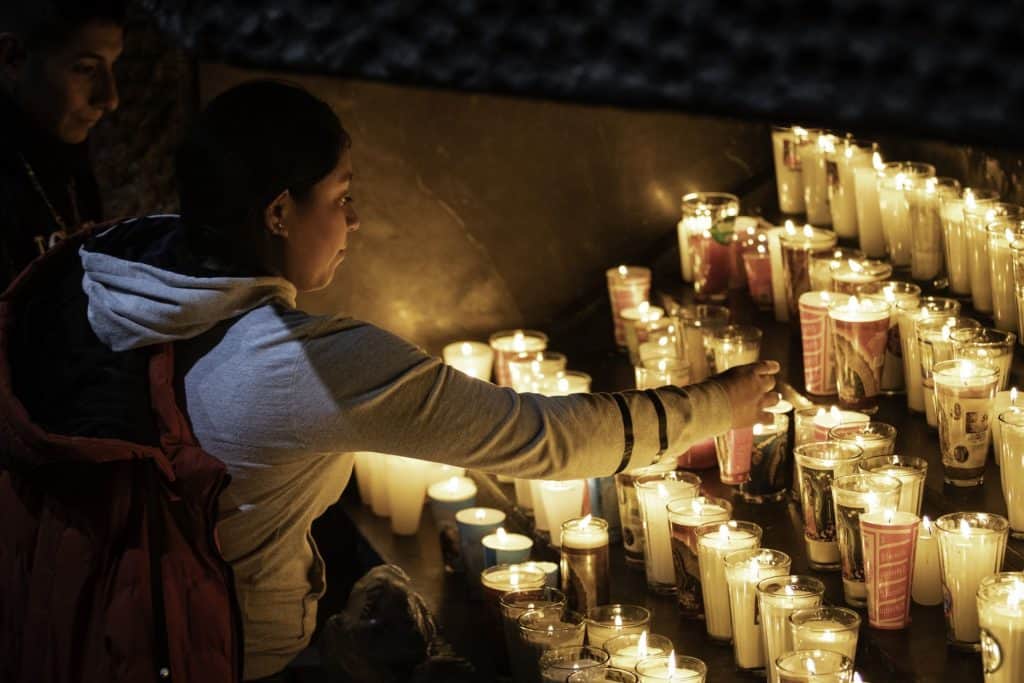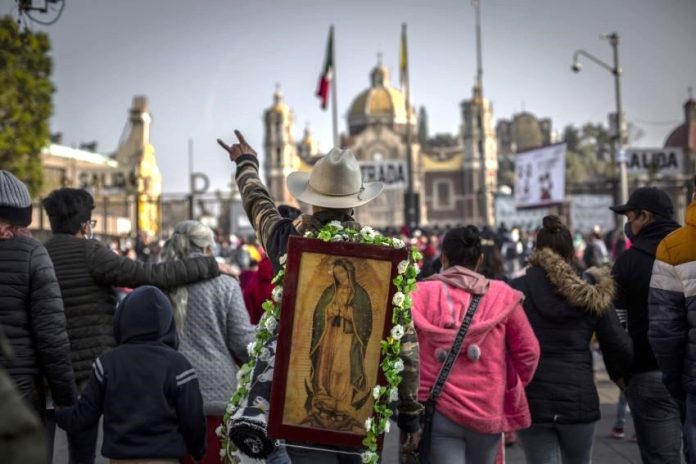From roadside shrines and spectacular cathedrals to the traditional Catholic Holy Week processions and the syncretic celebration of Day of the Dead, religion permeates Mexico’s physical and cultural landscape. But how many people in Mexico are actually religious?
The most accurate answer comes from the Population and Housing Census, conducted every ten years by the National Institute for Statistics and Geography (INEGI). The most recent 2020 census contains a detailed breakdown of Mexico’s religious panorama and provides intriguing insights into how faith in Mexico has changed over time.

How many Mexicans identify as religious?
Mexico remains a highly religious country.
In 2020, only 8.2% of the population said they had no religion at all – a total of 10.2 million Mexicans. In addition, 3.1 million people, or 2.5% of the population, said that they believed in a higher power, but did not adhere to a formal religion.
How dominant is Christianity in Mexico compared to other religions?
Unsurprisingly, most Mexicans identified as Catholics – 77.7%. Another 11.2% of the population identified as Protestant or Evangelical, while only 0.2% practiced a different religion. This means that Christian denominations still represent 88.9% of the Mexican population.
Of the non-Christian religions, just under 59,000 Mexicans identified as Jews, while just under 8,000 identified as Muslims. Just under 41,000 practiced religions with African roots, and around 33,000 practiced religions with “ethnic roots” – a term INEGI does not clearly define, but appears to describe Indigenous beliefs.
How have religions grown or declined in the last decade?
While Catholicism is still Mexico’s primary religion, INEGI’s historical data show that its dominance has steadily declined over the last century. From 99% in 1910, Catholics fell to 98.2% of the population in 1950, 92.6% in 1980, 87.9% in 2000, and 82.7% in 2010, before reaching 77.7% in 2020. In other words, the Catholic population has dropped by more than 10 percentage points in the last 20 years alone.
![]()
Meanwhile, the Protestant population has steadily grown – from 0.9% in 1940, to 1.8% in 1980, 7.3% in 2000, and finally 11.2% in 2020. The growth in Protestantism was particularly marked during the 1980s, when alternative branches of Christianity gained traction in Mexico’s economically marginalized southern states.
As for non-believers, they have jumped from 0% in 1950 to 1.6% in 1970, 3.1% in 1980, 4.7% in 2010, and finally 10.6% in 2020 – including both the non-religious and informal belief categories.
Which religions predominate in larger urban areas vs rural areas?
Christian congregations predominate in Mexico’s rural areas. A Protestant presence is most common in localities with fewer than 10,000 inhabitants, while Catholicism is most dominant in towns with 1,000 to 99,000 inhabitants, and Judaism in cities of 100,000 or more.

Mid-sized cities with 100,000 to 250,000 inhabitants have the presence of Catholic, Protestant and non-religious groups, but in these locales, the proportion of non-religious people is significantly higher than the national average. In Mexico’s largest cities, Catholics and non-religious people are most represented.
How do religious affiliations vary by state in Mexico?
In 1990, Catholics made up less than 75% of the population in only two states: Chiapas and Tabasco. In 2020, this number had grown to ten, with the addition of Baja California, Campeche, Quintana Roo, Tamaulipas, Baja California Sur, Chihuahua, Morelos and Yucatán.

Broadly speaking, these are also the states with the largest Protestant populations. In 1990, Protestants made up more than 11% of the population only in Campeche, Chiapas, Quintana Roo and Tabasco. By 2020, this number had grown to 15 – the states listed above, plus Coahuila, Oaxaca, Veracruz, Nuevo León and Sonora.
In 1990 and 2000, Chiapas was the only state where non-religious people made up more than 10% of the population, joined in 2010 by Campeche, Quintana Roo and Tabasco. By 2020, 14 states were in this category, with the highest proportions of non-religious people living in Quintana Roo (22.5%), Baja California (20.4%) and Mexico City (15.6%).
With reports from El Financiero and Nexos
